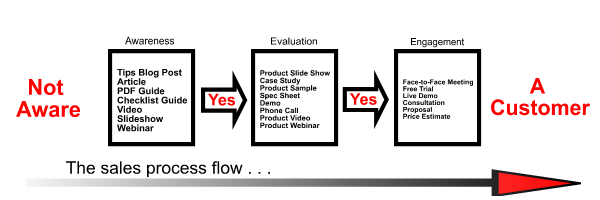Keys to Delightful Content
Keys to Delightful Content
8 Content Marketing Tips for Your Content
 Content Marketing is about creating content that is useful and valuable to your target audience. Part of the process to create this valuable content is to ask ourselves what content is actually helpful.
Content Marketing is about creating content that is useful and valuable to your target audience. Part of the process to create this valuable content is to ask ourselves what content is actually helpful.
When I discuss this topic with my clients I think some may be too critical of their own work while others may not be critical enough. Here is a list of items that can help you in your effort to delight your audience with content.
This list may help some to lighten up and it may send some others back to rethink, rewrite and perhaps to simplify.
If you are at either end of the spectrum (or in the middle) then don’t worry — it’s all for the love of your audience!
Here is my list of the qualities of truly valuable marketing content.
1) Address the Target Audience’s Needs and Questions.
One of the first questions a content creator should ask is, “For whom am I writing this piece of content?”
You’re going to have a tough time creating a piece of valuable content if you haven’t identified your target audience. To define your target audience defines the kinds of questions they have that need answering.
Create a clear description of your target audience. Identify what they would like to know. Then write content that answers those questions. In some cases you may not be defining questions but defining a problem the target audience has and then you can provide content to help them solve their problem.
Let’s say you’re a real estate agent . . .
Target Audience: Your target audience is comprised of people at the affluent end of the income spectrum and that want to live in a community that has a good sense of itself, that cooperates and that has organizations that are very civic minded. You also define this audience a relatively ignorant of this aspect of your community.
Purpose of Content Piece: You want to write a blog post that helps this target audience understand the human spirit nature and civic mindedness of your community.
To define the target audience and the purpose of your content marketing piece will help you to write specifically and clearly to this audience and add something of value related to your purpose.
2) Align with the Reader’s Understanding of the Subject.
Some of your readers may have a good understanding of the topic while others may be learning about it for the first time. You need to consider this when you create the content piece. For some you may need to provide some background. For others, who already know the background, this may make reading your piece too time consuming.
You may want to give the reader a heads up, of sorts, so that they know, up front, if the piece will be elementary or advanced. Something that goes right over the head of the audience is not of great value. Something that is too basic for the intended audience will not provide enough value.
3) Align with the Reader’s Position in Sales Cycle.
Before you publish a content marketing piece, consider the type of content for both the channel and for the step in the process. Your content will be more effective if you mesh with where your readers are in the process of the “sales” cycle. There are certain channels, content types, and subject matters that are really only appropriate for readers at a certain stage in your marketing funnel.
Here are three places in the sales process where your target audience could be located:
- Awareness
- Evaluation
- Engagement
 A blog is a great place to stimulate awareness and helps move people through the evaluation category and into the engagement stage. If you are a real estate agent then you may not want to flood your blog with detailed listing information better intended for the evaluation-engagement stage. Use your marketing channels properly.
A blog is a great place to stimulate awareness and helps move people through the evaluation category and into the engagement stage. If you are a real estate agent then you may not want to flood your blog with detailed listing information better intended for the evaluation-engagement stage. Use your marketing channels properly.
4) The Tone is Clear and Accessible.
It’s always healthy to take a step back and do a check on the ease of reading your writing.
Read through your content to see if you’re saying things as clearly as possible. If you have trouble creating an accessible tone in your blog (for example), then a good rule of thumb is to write in your blog how you would speak to a friend.
For example, how would I explain what SEO is to my sister who is not in the Internet Marketing business?
Here is a non-reader friendly way to explain what SEO is:
“SEO describes the practice of optimizing, by aligning with the signals defined by the search engine’s algorithms, the instances and placement of your site’s web pages in the SERPs based on a user’s specific search query to help solve for greater traffic and conversions. All on-site HTML and content must be aligned properly with the search engine’s algorithms in order for specific content to be presented high in the SERPs. Off-site signals must also be optimized in competitive online markets.”
Here is a reader-friendly version with the thinking that the target audience is not advanced on the topic:
“You know when you go to Google and type something in — like how late the grocery store is open? Well, you usually click on the first few results, because they answer your question the best, right? That’s what SEO is — it stands for search engine optimization, and it’s all about finding a way to get your local grocery store to show up in the top of Google.”
Some readers will probably understand the first techno-jargon filled version but we don’t want to make most readers work too hard. We want to mesh our content to their level. We want to make our content valuable and enjoyable.
Don’t leave anybody out by speaking in more complicated terms than are absolutely necessary.
5) Include Specific Helpful Information.
Part of writing with a clear tone means writing with specificity. Avoid broad general statements. If you do make a broad general statement then provide specific details that help clarify your meaning.
If you write a “how to” piece, for example, make general statements but then explain the specific details.
If I want to write a piece on How to Set Up Your Page Title Tag for Optimal SEO then I may want to include:
- Details – Make the Title Tag 50-70 characters long
- Visuals – An Annotated Screen Shot
- Instructions – Define exactly the location of the Title Tag Field
- Video – A step-by-step video
- Verification – A reference tool to confirm the set up of the Title Tag
Content which bridges the gap between theory and execution is significantly more valuable than general content that touts best practices but doesn’t tell the reader how to do anything.
6) Uses Examples to Help Clarify from the Real World.
- Are you selling carpet then write about the stain resistance qualities of your carpet.
- Are you selling homes to 1st time buyers then you may want to write about the merits of the school system.
- Are you selling retirement homes then write about the great golf courses and the quality of life.
- Are you selling SEO services to real estate (I do) then I use examples related about conducting keyword research around real estate search terms.
Real world examples from the world of your target audience will make your materials more valuable.
7) Use The Right Content Type.
Finally, whether your content is valuable or not has a lot to do with the shape it takes — blog post, ebook, tip sheet, video, podcast, infographic, visualization, graph, cartoon — you get the picture.
There are some concepts that are best communicated in some of these forms, while the other content types should really be left for other subject matters. If you’ve selected a content format type that aligns really well with your subject matter — like a video and accompanying blog post to explain how to set up your Pinterest account then the content will be easier for your audience to consume.
The easier it is to consume, the more they’ll get from it! The more they will want to engage you and your business.
8) Add Entertainment Value.
Can’t we just have a little fun once in a while?
Yeah! Totally dude!
I think there’s a lot of value in publishing content that is just there to entertain … once in a while. You might learn a little bit along the way, too, but it’s alright to intersperse your educational content with a little fun.
It’s good to give your readers’ brains a breather once in a while with content that’s a little bit lighter. Plus, it helps you build your brand, be more likable, and strengthen the emotional ties your reader has with your content.
If you are all work and no play then people may think you’re no fun. People want to have fun whatever they are trying to accomplish. Add in a bit of appropriate fun and the engagement will increase.
